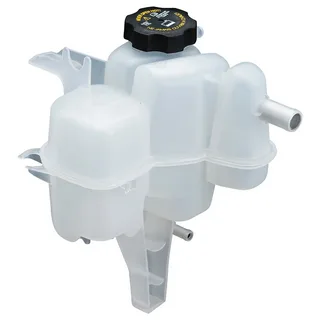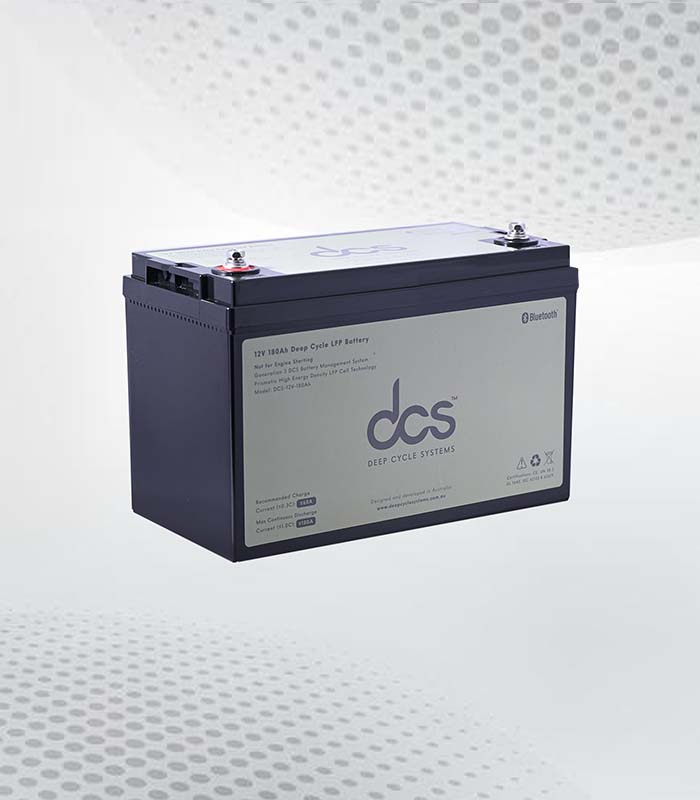The Ford Escape Coolant Tank plays a crucial role in maintaining the proper temperature of your vehicle’s engine. It is important to ensure that this component is well-maintained to prevent overheating and potential damage to your engine. In this blog post, we will discuss the importance of a well-maintained Ford Coolant Tank and provide tips on how to keep it in top condition. One key aspect to monitor is the coolant level; insufficient fuel can lead to engine overheating. Regularly checking for leaks or cracks in the coolant tank can also help prevent unexpected breakdowns and costly repairs.
Understanding the Role of the Ford Escape Overflow Bottle
The Overflow Bottle, an essential component of the Ford Escape’s cooling system, acts as a reserve tank for the coolant. This container, commonly called the Ford Coolant Tank, is engineered to accommodate the expansion and contraction of coolant that occurs due to temperature fluctuations within the engine. As the engine operates, it generates heat, causing the coolant within the system to expand. This excess coolant needs somewhere to go; otherwise, the system could become pressurised and overheated. The overflow bottle provides a space for this expanded coolant, preventing potential system failures.
Furthermore, as the engine cools down, the coolant contracts. The overflow bottle then serves an additional purpose by allowing the contracted coolant to return to the system, ensuring the engine maintains an optimal coolant level. This cyclical process is vital for the engine’s temperature regulation, helping to maintain a balance that prevents the engine from becoming too hot or too cool.
The integrity of this component is paramount. A compromised coolant tank can disrupt the balance of the cooling system, impede the proper functioning of the engine, and lead to overheating. This is why understanding the role of the Ford Escape Overflow Bottle is crucial for vehicle maintenance. It is not merely a container but a critical part of the engine’s cooling mechanism that ensures the vehicle’s engine’s longevity and efficiency by managing the coolant’s thermal expansion and contraction.
Common Signs Your Coolant Tank Needs Attention
Observing the condition of your Ford Coolant Tank is crucial for catching potential issues early. Key indicators that your coolant tank may require immediate attention include unusual decreases in coolant levels without an apparent reason. This could signal a system leak, which compromises the cooling capacity and can lead to significant engine damage if not addressed promptly.
Another telltale sign is the presence of visible leaks around the coolant tank. Coolant typically has a bright colour, such as green, orange, or pink, making it easier to spot leaks on your driveway or garage floor.
Additionally, if your Ford Escape starts to overheat frequently, it’s a strong indication that the coolant tank might fail to regulate the engine’s temperature properly. This overheating can lead to more severe engine issues, making it critical to inspect the coolant tank and related components as soon as possible.
Another red flag is a sweet smell emanating from the engine bay. Engine coolant has a distinct sweet odour, and noticing this smell could indicate a coolant leak, often related to a compromised coolant tank.
In any of these scenarios, early detection and intervention are key. Ignoring these signs can lead to more extensive and costly repairs. Regular checks and maintenance can help identify these issues before they escalate, ensuring your Ford Escape remains in optimal running condition.
How to Diagnose Common Ford Focus Coolant Tank Problems?
The Ford Focus is a reliable vehicle, but like any car, it can encounter issues, particularly with the coolant tank. Diagnosing coolant tank problems early can prevent more significant engine damage. Here are some common issues and how to diagnose them.
1. Coolant Leaks
Leakage is a frequent issue with the Ford Focus coolant tank. Over time, the plastic tank can develop cracks due to heat and pressure. Inspect the tank for visible cracks or damp spots if you notice a low coolant level or see puddles under your car. A leaking coolant tank often shows white or orange crusty residue, indicating dried coolant.
2. Overheating
If your Ford Focus overheats, the coolant tank could be the culprit. Check the coolant level in the tank when the engine is cold. A low coolant level can cause the engine to overheat. If you find the coolant level low but no visible leaks, there might be internal leaks or a faulty coolant cap causing pressure issues.
3. Coolant Discoloration
The coolant in your Ford Focus should be a consistent colour, typically orange or yellow. If the coolant appears brown or milky, it might indicate contamination from rust or oil, suggesting a more severe issue like a blown head gasket or corroded radiator.
4. Swollen or Collapsed Coolant Tank
Inspect the coolant tank for any signs of swelling or collapse. This could indicate pressure issues within the cooling system, possibly due to a failing radiator cap or a blocked hose.
Steps to Replace a Faulty Coolant Tank
Embarking on replacing a faulty Ford Coolant Tank begins with safety first: ensure the vehicle is cool and securely parked. Initiating the process, carefully drain the existing coolant from the system into a suitable container for proper disposal or recycling. Locate and gently detach any connected hoses, remembering to release any clamps or fasteners with the appropriate tools to prevent damage.
With the hoses disconnected, focus on removing the coolant tank. This step might require removing fasteners or brackets holding the tank in place. Exercise caution to avoid breaking any clips or mounts, as this could complicate the installation of the new tank.
Once the old tank is removed, it’s an opportune moment to inspect the area for any signs of corrosion or damage that could affect the new tank’s installation or function. Clean the area if necessary, ensuring a smooth surface for the new component.
Proceed to install the new coolant tank, reversing the removal process. Secure the tank in place, ensuring it’s properly aligned and firmly attached without overtightening, which could cause damage. Reattach the hoses, properly securing any clamps or fasteners to ensure a tight and leak-free connection.
The final step involves refilling the system with coolant. Follow the manufacturer’s guidelines for the type and amount of coolant required for your Ford Escape. After filling, bleed the cooling system to remove any air pockets, as these can lead to overheating and reduce the efficiency of your cooling system.
Upon completion, conduct a thorough inspection to ensure that there are no leaks and that the coolant tank is securely installed. Starting the engine and allowing it to reach operating temperature while monitoring the cooling system’s performance is advisable to confirm the success of the replacement.
Preventative Maintenance Tips for Your Ford Focus Overflow Bottle
The overflow bottle in your Ford Focus is crucial in maintaining the engine’s cooling system. Regular maintenance of this component ensures your engine runs smoothly and avoids costly repairs. Here are some tips to help you keep your overflow bottle in top condition.
1. Regular Inspection
Inspect the overflow bottle every few weeks for signs of damage or leaks. Look for cracks, discolouration, or fluid around the bottle, as these are indicators that it may need replacing. Ensure the coolant level is within the recommended range, which is marked on the bottle’s side.
2. Check the Coolant Quality
The quality of the coolant in the Ford Focus Overflow Bottle is vital. Over time, coolant can become contaminated, leading to corrosion in the cooling system. Check the coolant’s colour—it’s time to replace it if it appears rusty or dirty. Always use the coolant type recommended by Ford for your Focus.
3. Secure the Cap
The cap on the overflow bottle must be tightly secured to maintain proper pressure in the cooling system. A loose or damaged cap can cause coolant to escape, leading to overheating. Periodically check the cap for wear and tear and replace it if necessary.
4. Flush the Cooling System
Regularly flushing the cooling system helps to prevent debris buildup, which can clog the overflow bottle and other components. Ford recommends flushing the system every 30,000 miles or as specified in your owner’s manual.
The Benefits of Keeping Your Coolant Tank in Top Condition
Maintaining your vehicle’s coolant tank in top condition ensures optimal engine performance and longevity. The coolant tank plays a vital role in regulating the engine’s temperature, preventing overheating, and protecting against corrosion.
Prevents Engine Overheating
One of the primary benefits of a well-maintained coolant tank is its ability to prevent engine overheating. The coolant absorbs heat from the engine and dissipates it through the radiator. If the coolant tank is compromised, the engine may overheat, leading to significant damage, including warped cylinder heads and blown gaskets, which can be costly.
Protects Against Corrosion
The coolant also contains additives that prevent engine and cooling system corrosion. A properly functioning coolant tank ensures that the coolant circulates effectively, maintaining the correct balance of these additives. Over time, neglecting the coolant system can lead to the buildup of rust and scale, which can clog passages and reduce the cooling system’s efficiency.
Enhances Overall Engine Efficiency
A well-maintained coolant system helps maintain the engine at its optimal operating temperature, essential for fuel efficiency and performance. When the engine runs too hot or cold, it can affect combustion and the vehicle’s fuel economy. Keeping the coolant tank in good condition ensures that the engine operates efficiently, saving you money on fuel and reducing the risk of breakdowns.
Conclusion
Maintaining the health of your Ford Escape Coolant Tank is more than just a preventative measure; it’s a critical aspect of vehicle care that directly impacts engine performance and longevity. Recognising this component’s integral role in the broader cooling system underscores the necessity of consistent upkeep and swift action when issues arise. Engaging in regular checks and maintenance ensures that the system functions efficiently, keeping your vehicle running smoothly and reliably. Ignoring signs of wear or malfunction can escalate into more severe complications, making early detection and repair paramount.
FAQS
Q: How frequently should the coolant level in my Ford Escape be checked?
A: To ensure optimal performance and prevent potential issues, it is advisable to check the coolant level in your Ford Escape monthly, especially before embarking on lengthy journeys. Regular inspections can help identify coolant levels or quality changes that may indicate maintenance needs.
Q: What are the risks of driving with a compromised Ford Escape Coolant Tank?
A: Driving with a damaged or leaky Ford Escape Coolant Tank poses serious risks, including overheating, which can lead to significant engine damage or failure. To safeguard your vehicle’s engine and overall performance, resolving any coolant tank issues promptly before they escalate is crucial.
Q: What should I do if I notice a drop in the coolant level but no visible leaks?
A: A decrease in coolant levels without obvious leakage could suggest an internal system issue or a slow leak that’s harder to detect. In such cases, a thorough inspection by a professional is recommended to diagnose and address the underlying problem effectively, ensuring the cooling system functions correctly.
Q: How can I tell if my coolant tank needs to be replaced?
A: Signs that your coolant tank may need replacement include noticeable physical damage like cracks or brittleness, persistent coolant level decreases, or recurring engine overheating. If you observe any of these indicators, consulting a mechanic for a comprehensive evaluation is the best action.




